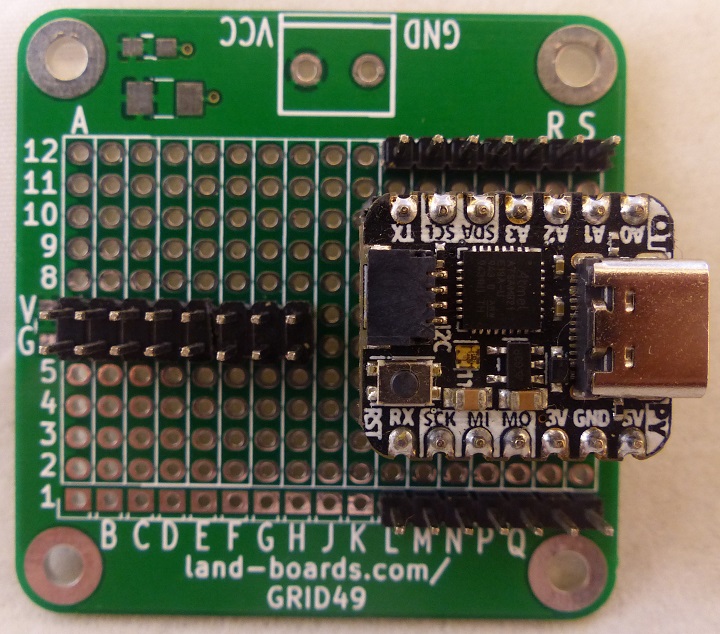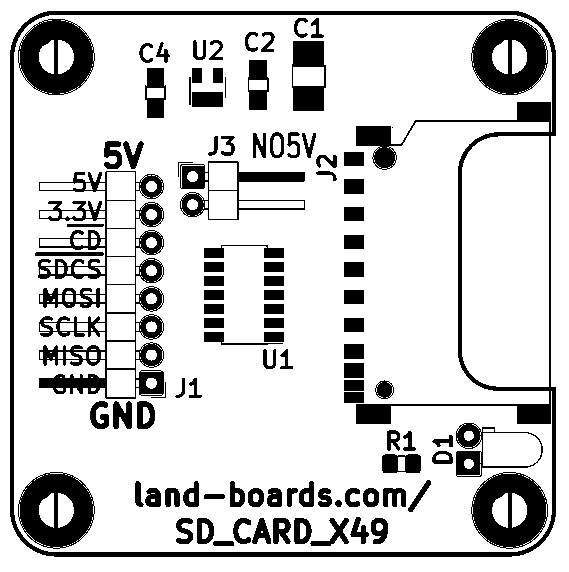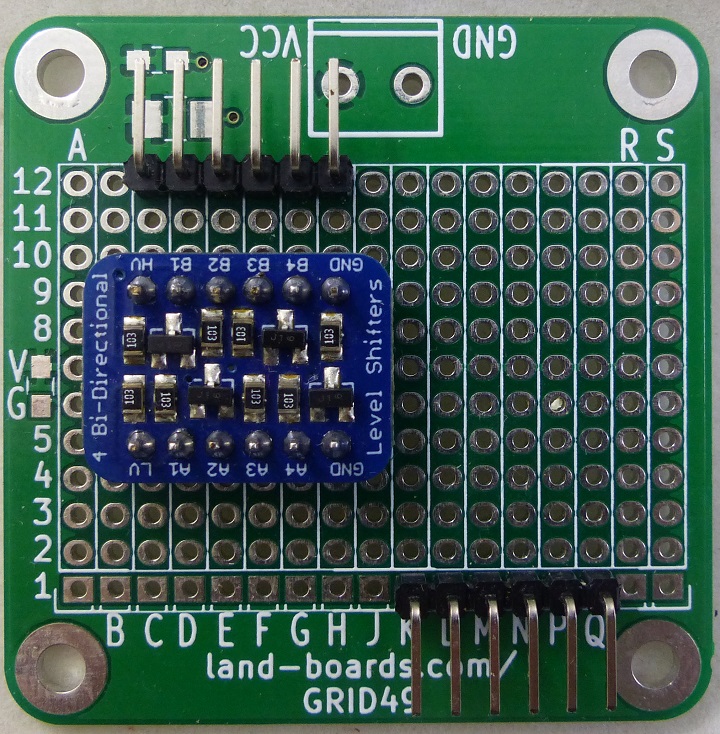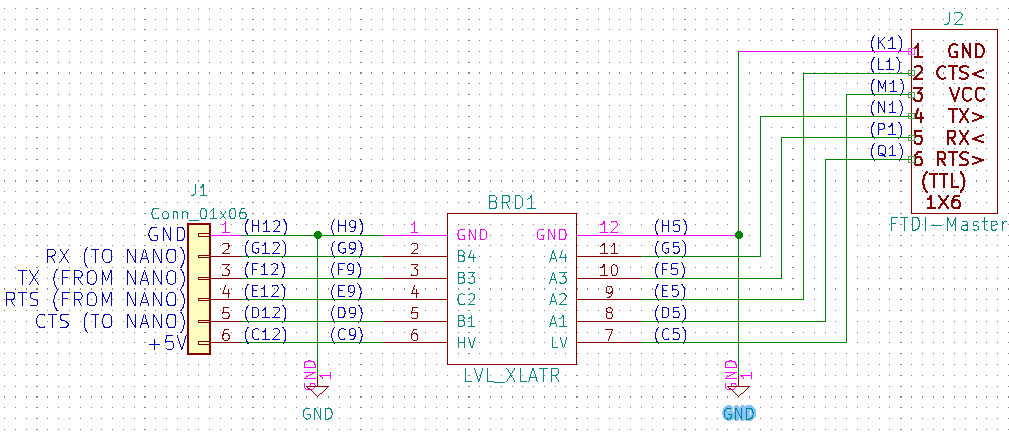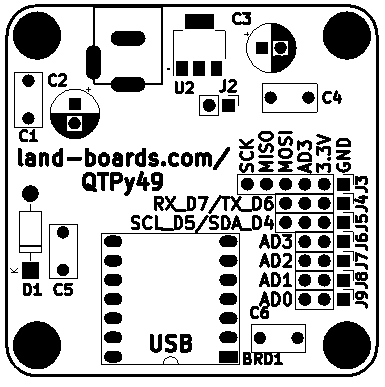Difference between revisions of "SD Loader"
Jump to navigation
Jump to search
Blwikiadmin (talk | contribs) |
Blwikiadmin (talk | contribs) |
||
| Line 166: | Line 166: | ||
== QT Py Card Cabling == | == QT Py Card Cabling == | ||
| + | |||
| + | [[file:QTPy49_CAD.PNG]] | ||
| + | |||
| + | * QT Py Card has function specific headers | ||
== Software == | == Software == | ||
Revision as of 11:41, 6 June 2022
Contents
SD/Serial Loader
- Send/receive files to/from SD card from/to serial port
- Menu driven program
Features
- Supports SD cards up to 32GB
- FAT32 formatted
- Serial interface
- Full hardware Handshake support
Cards
- Constructed out of existing Land Boards cards
- QT Py board
- Either the SAMD board or RP2040 board versions
- QT Py Breakout board or QTPy49
- SD CARD X49
- MyMenu
- MCP23008 I2C interface
- OLED
- 5 Pushbuttons
- 3 LEDs
- Optional Level Shifter mounted on GRID49 card
- Used for legacy 5V system targets
QT Py Breakout
- Power via USB C cable
SD CARD X49
MyMenu
Level Shifter (Optional)
- Use for "legacy" 5V Serial systems
- Not used for 3.3V systems
- Convert 3.3V QT Py Tx/Rx/RTS/CTS to "legacy" 5V
- 4-channel I2C-safe Bi-directional Logic Level Converter
QT Py Breakout Card (on GRID49 card) Cabling
- QT Py uses (2) 1x7 male headers for signals
- Cut off 1 set of holes of (2) female housings to make 1x7 female headers
- SD Card uses (1) 1x8 header
- MyMenu uses (1) 1x5 header
- QT Py uses 2x8 header for 3.3V and Ground
- Use 2x3 female housings
- 40mm cables to Host Target
QT Py Breakout Card to MyMenu Cabling
| QT Py | SIGNAL | MyMenu | COLOR |
|---|---|---|---|
| 1 (A0) | INT(D6) | P2-5 | GRY |
| 5 (SDA) | SDA | P2-3 | WHT |
| 6 (SCL) | SCL | P2-4 | BRN |
| GND | GND | P2-1 | BLK |
| VCC | +3.3V | P2-2 | RED |
QT Py Breakout Card to SD_CARD_X49 Cabling
| QT Py | SIGNAL | SD_CARD_X49 | COLOR |
|---|---|---|---|
| 03 (A3) | SS* | J1-5 | GRY |
| 09 (SCK) | SCK | J1-3 | BLU |
| 10 (MI) | MISO | J1-2 | BRN |
| 11 (MO) | MOSI | J1-4 | WHT |
| GND | GND | J1-1 | BLK |
| VCC | 3.3V | J1-8 | RED |
QT Py Breakout Card to Host Serial
| QT Py | SIGNAL | COLOR |
|---|---|---|
| GND | GND | BLK |
| 7 (TX) | TX | WHT |
| 8 (RX) | RX | BRN |
| 2 (A1) | RTS* | GRY |
| 3 (A2) | CTS* | ORA |
QT Py Card Cabling
- QT Py Card has function specific headers
Software
- Runs on Arduino Nano
Human Interface Design (HID)
- Menu driven
- OLED display
SD Card
- Library
- Example files
SD Card Library
- SD Card library
- The SD library allows for reading from and writing to SD cards, e.g. on the Arduino Ethernet Shield
- Based on sdfatlib
- The library supports FAT16 and FAT32 file systems on standard SD cards and SDHC cards
- It uses short 8.3 names for files
- The file names passed to the SD library functions can include paths separated by forward-slashes, /, e.g. “directory/filename.txt”
- Because the working directory is always the root of the SD card, a name refers to the same file whether or not it includes a leading slash (e.g. “/file.txt” is equivalent to “file.txt”)
- As of version 1.0, the library supports opening multiple files.
- The communication between the microcontroller and the SD card uses SPI, which takes place on digital pins 11, 12, and 13 (on most Arduino boards) or 50, 51, and 52 (Arduino Mega)
- Additionally, another pin must be used to select the SD card
- This can be the hardware SS pin - pin 10 (on most Arduino boards) or pin 53 (on the Mega) - or another pin specified in the call to SD.begin()
SD Card Example Code
- SD Card example Code
- Read and Write File example
- Read Card Information
- Read a file from a SD card using the SD library and send it over the serial port
- Create and destroy a file on a SD card
- List the files available in the directory of the SD card
SD Card Connections
** SCLK - CLK - pin 13 ** MISO - SDI - pin 12 ** MOSI - SDO - pin 11 ** SS - CS - depends on your SD card shield or module.
Serial
- Serial Reference
- Serial.begin(speed)
- Serial.available()
- Get the number of bytes (characters) available for reading from the serial port.
- This is data that’s already arrived and stored in the serial receive buffer (which holds 64 bytes).
- Turn off/on receive handshake based on Serial.available() count and storage
- Serial.write()
- Writes binary data to the serial port
- This data is sent as a byte or series of bytes
- To send the characters representing the digits of a number use the print() function instead.
- Syntax
Serial.write(val) Serial.write(str) Serial.write(buf, len)
